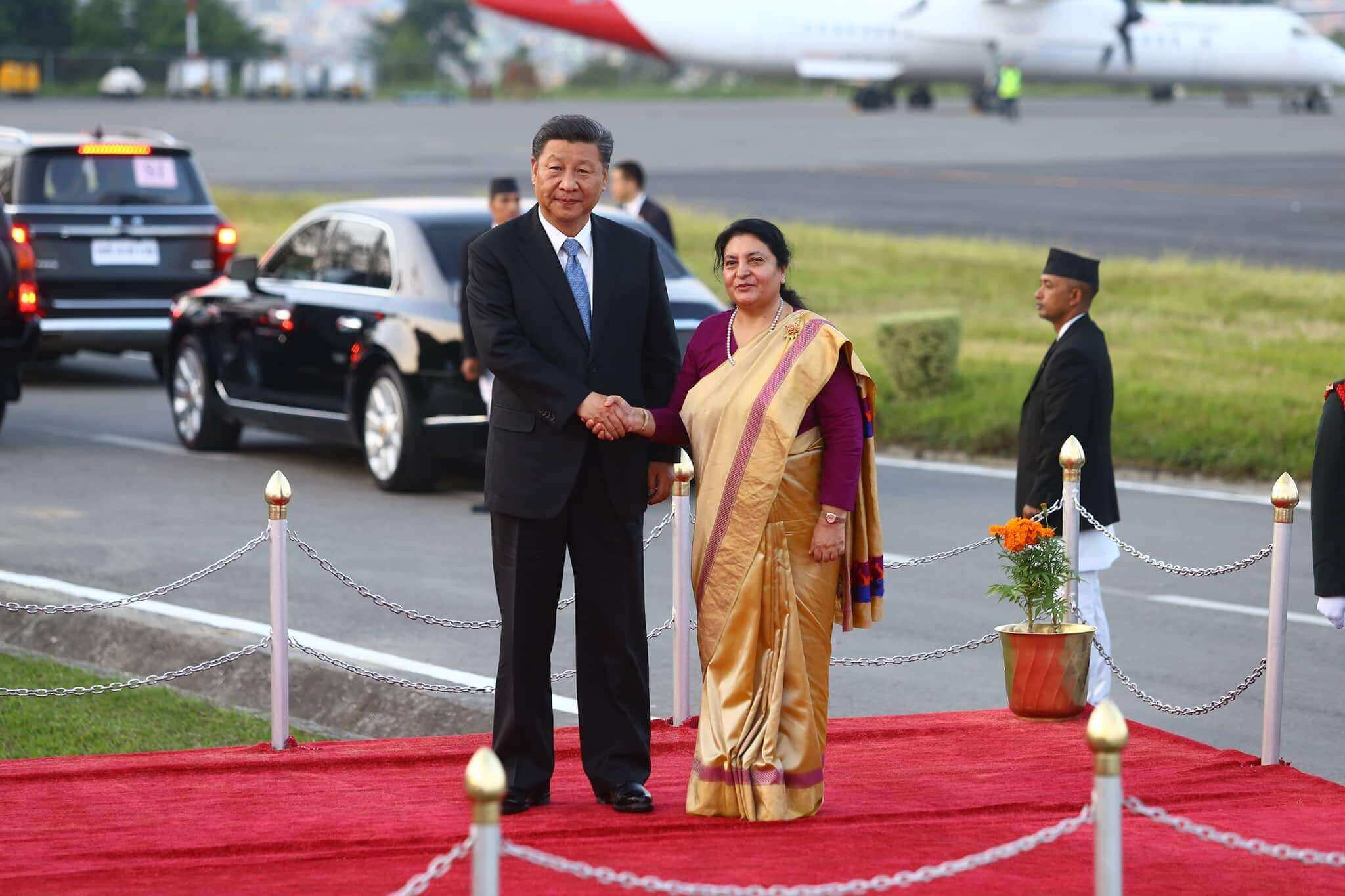Looking beyond two boulders
Nepal cannot choose its neighbours but there is a whole other multilateral world out thereDescribed by its founding king 260 years ago as a “yam between two boulders” pressed on both sides by the Chinese Empire and British India, the metaphor has metamorphosed in the new geopolitical reality that Nepal faces.
The gradual withdrawal of a distracted West, the rise of India and China, and emerging power of the Gulf states is also changing Nepal’s foreign policy outlook, and forcing it to reimagine its place in a multilateral world.
After Donald Trump became president for the second time this year, geopolitics is going through a tectonic shift. Washington’s relations with New Delhi have recently become strained after Trump took credit for the ceasefire between India and Pakistan in May, and Trump dining with Pakistan Army chief Asim Munir at the White House. Then, Trump threatened to impose an extra tariff on 10 members of the BRICS bloc, which includes India.
“Recent developments between India and the US are a result of President Trump’s reactive approach that did not meet Indian prime minister Modi’s expectations,” explains international relations expert Prakash Bhandari.
If this pushes India closer to China, it may tip Kathmandu’s precarious balancing act between Beijing and New Delhi. Although Nepal has not suffered punitive US trade tariffs like other Asian countries, the closure of USAID projects and imminent mass deportation of Nepali TPS migrants will have far-reaching consequences.
“There are multiple global crises happening at the same time. Any attempt to change Nepal’s non-aligned principle during this complicated phase of world politics will push us into a deep quagmire,” warns foreign policy expert Nishchal Nath Pandey.
Shifting geopolitics could force Nepal to review its policy of neutrality and equidistance between its two giant neighbours to pursue a more pragmatic economic diplomacy that focuses on foreign investment, trade, tourism, and labour export.
Experts have often joked that Nepal is not “landlocked but India-locked” since trans-Himalayan connectivity is much more difficult than the open border to the south. This has historically made Nepal more economically and politically dependent on India.
“Whether like it or not, we are likely to lean more towards India,” says Santosh Sharma Poudel from Nepal Institute for Policy Research. “Even Chinese leaders have told Nepal’s rulers to maintain friendly relations with India.”
This may therefore be the time for Nepal to look beyond the ‘two boulders’ to promote foreign direct investment from countries like Japan, Korea, the Gulf states and Europe. Besides serving as a destination for Nepali migrants, countries like Qatar, Saudi Arabia, UAE and Oman have untapped investment and tourism opportunities.
“Sectors such as hydropower and trade have immense investment potential from countries beyond our neighbours,” says Poudel.
Even so, the geopolitical reality is that India and China will always loom large. India has barely tolerated increased Chinese presence in Nepal’s hydropower and infrastructure, refusing to buy electricity and allow flights from projects with Chinese involvement.
Nepal has felt squeezed by the two neighbours both when their relations are strained after border skirmishes, or when their relations are good.

India’s post-earthquake blockade in 2015 still rankles. Nepalis remember that China did not support their claim to the Limpiyadhura region, and that Beijing retroactively announced that Pokhara airport was under its Belt Road Initiative (BRI) even though Nepal took a hefty loan for it.
The Sino-US Cold War has also affected Nepal with the orchestrated opposition in 2021 to the $500 million Millennium Challenge Corporation (MCC) project to upgrade transmission lines and highways. After Trump, the MCC faced uncertainty but it has been continued possibly because it is seen in Washington as a counter to China’s BRI in Nepal.
The lesson is that Nepal cannot expect magnanimity or charity from its big neighbours, or the United States. Every country is looking out for its own national interest, and so should Nepal by asserting its independence and improving its governance to develop the economy.
“India has its own place and China has its own place in terms of their relations with Nepal,” says Indra Adhikari from Policy Research Institute. “But it is true that Nepal has not been able to leverage its relations with both neighbours.”
This does not mean playing New Delhi off against Beijing, but to get both powers to be twin locomotives pulling Nepal’s economy in the same direction. What Nepal definitely cannot afford is to have the two engines tugging the country in opposite directions.
Adhikari adds, “It is natural that each country sees its own interest while investing in Nepal. We should be able to establish an environment of trust for countries which want to invest.”
With Nepal on the pathway to transitioning from a Least Developed Country to a developing country by November 2026, it will have to plan for loss of foreign aid and higher interest rates on loans from international agencies. This means greater emphasis on improving the foreign investment climate to create domestic jobs and boost the economy.
This requires a change in the mindset of Nepal’s politicians to understand the transformed geopolitical reality, and strategise accordingly. But, says Nischal Nath Pandey: “We have changed our political system often, but our geography has not changed.”




